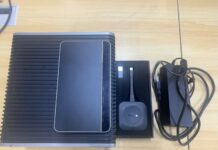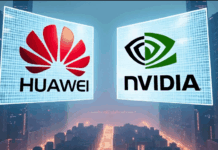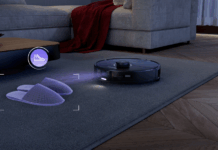Computer architecture is a fundamental field that forms the backbone of modern computing. It encompasses the design, structure, and functioning of computer systems, providing the theoretical and practical foundation necessary for building and understanding advanced computing technologies. Whether you’re a student, a professional, or an enthusiast, delving into the best books on computer architecture can significantly enhance your knowledge and skills. Here’s a comprehensive guide to some of the best books in this field.
1. “Computer Architecture: A Quantitative Approach” by John L. Hennessy and David A. Patterson
Overview
This book is considered the gold standard in the field of computer architecture. Authors Hennessy and Patterson provide a deep dive into the principles of computer design, focusing on quantitative techniques to evaluate performance. The book covers topics such as memory hierarchy, parallelism, and multicore processors.
Why It’s Recommended
- Comprehensive and detailed explanations.
- Uses real-world case studies.
- Accompanied by exercises and problems to reinforce learning.
2. “Computer Organization and Design: The Hardware/Software Interface” by David A. Patterson and John L. Hennessy
Overview
A companion to the previous book, this text is aimed at undergraduate students and provides an introduction to the hardware/software interface. It covers the fundamentals of computer organization and design, including assembly language, computer arithmetic, and the basics of pipelining.
Why It’s Recommended
- Accessible for beginners.
- Practical examples and real-world applications.
- Supports learning with interactive tools and resources.
3. “Structured Computer Organization” by Andrew S. Tanenbaum and Todd Austin
Overview
This book provides a thorough introduction to computer organization and architecture. It is well-suited for students new to the subject and covers the hierarchical nature of computer design, from simple logic circuits to complex systems.
Why It’s Recommended
- Clear and concise explanations.
- Hierarchical approach to understanding computer systems.
- Well-illustrated with diagrams and examples.
4. “Modern Processor Design: Fundamentals of Superscalar Processors” by John Paul Shen and Mikko H. Lipasti
Overview
Focused on the design of superscalar processors, this book delves into the complexities of modern processor architecture. It covers advanced topics such as branch prediction, out-of-order execution, and memory hierarchy design.
Why It’s Recommended
- Detailed coverage of advanced processor design concepts.
- Practical approach with a focus on implementation.
- Extensive examples and case studies.
5. “Digital Design and Computer Architecture” by David Harris and Sarah Harris
Overview
This textbook combines digital design and computer architecture in a single volume. It covers topics from basic logic design to advanced architectural concepts, making it suitable for both undergraduate and graduate students.
Why It’s Recommended
- Integrates digital design and architecture.
- Practical examples and exercises.
- Accompanied by an online companion site with additional resources.
6. “Computer Architecture and Parallel Processing” by Kai Hwang and Faye A. Briggs
Overview
This book provides a comprehensive introduction to the principles of computer architecture and parallel processing. It covers the design and analysis of parallel architectures, parallel algorithms, and programming techniques.
Why It’s Recommended
- In-depth coverage of parallel processing.
- Practical approach with examples and exercises.
- Suitable for advanced undergraduate and graduate courses.
7. “Advanced Computer Architecture: Parallelism, Scalability, Programmability” by Kai Hwang
Overview
Kai Hwang’s book delves into advanced concepts in computer architecture, focusing on parallelism, scalability, and programmability. It covers the design and implementation of high-performance computer systems.
Why It’s Recommended
- Comprehensive coverage of advanced topics.
- Emphasis on performance and scalability.
- Practical examples and real-world case studies.
8. “The Elements of Computing Systems: Building a Modern Computer from First Principles” by Noam Nisan and Shimon Schocken
Overview
This book takes a hands-on approach to teaching computer architecture by guiding readers through the process of building a computer from scratch. It covers both hardware and software aspects, from basic logic gates to high-level programming.
Why It’s Recommended
- Hands-on, project-based approach.
- Covers both hardware and software design.
- Suitable for beginners and intermediate learners.
9. “Parallel Computer Architecture: A Hardware/Software Approach” by David Culler and Jaswinder Pal Singh
Overview
This book provides an in-depth look at parallel computer architecture, focusing on the interaction between hardware and software. It covers topics such as cache coherence, interconnection networks, and parallel programming.
Why It’s Recommended
- Comprehensive coverage of parallel architecture.
- Emphasis on hardware/software interaction.
- Practical examples and case studies.
10. “Computer Systems: A Programmer’s Perspective” by Randal E. Bryant and David R. O’Hallaron
Overview
This book offers a unique perspective on computer architecture by focusing on how programmers interact with computer systems. It covers topics such as memory hierarchy, machine-level programming, and system-level I/O.
Why It’s Recommended
- Practical focus on programming and system interaction.
- Clear and concise explanations.
- Suitable for both students and professionals.
11. “Computer Architecture: Fundamentals and Principles of Computer Design” by Joseph D. Dumas II
Overview
Joseph D. Dumas II provides a comprehensive introduction to computer architecture, covering both fundamental principles and advanced topics. The book includes detailed discussions of digital logic, microarchitecture, and system-level design.
Why It’s Recommended
- Thorough coverage of both fundamental and advanced topics.
- Well-organized and easy to follow.
- Includes practical examples and exercises.
12. “Microprocessor Architecture: From Simple Pipelines to Chip Multiprocessors” by Jean-Loup Baer
Overview
This book focuses on the design and implementation of microprocessor architectures, from simple pipelines to complex chip multiprocessors. It covers topics such as instruction set design, pipelining, and memory hierarchy.
Why It’s Recommended
- Detailed coverage of microprocessor design.
- Practical approach with a focus on implementation.
- Suitable for advanced undergraduate and graduate students.
13. “Computer Organization and Architecture: Designing for Performance” by William Stallings
Overview
William Stallings’ book provides a comprehensive introduction to computer organization and architecture, focusing on performance. It covers topics such as processor architecture, memory hierarchy, and input/output systems.
Why It’s Recommended
- Emphasis on performance optimization.
- Clear and concise explanations.
- Practical examples and exercises.
14. “Computer Architecture: An Embedded Approach” by Ian McLoughlin
Overview
This book takes an embedded systems approach to computer architecture, focusing on the design and implementation of embedded systems. It covers topics such as microcontrollers, real-time systems, and hardware/software co-design.
Why It’s Recommended
- Embedded systems focus.
- Practical approach with real-world examples.
- Suitable for both students and professionals.
15. “Inside the Machine: An Illustrated Introduction to Microprocessors and Computer Architecture” by Jon Stokes
Overview
Jon Stokes provides an accessible introduction to microprocessors and computer architecture, using illustrations and examples to explain complex concepts. The book covers topics such as CPU design, memory hierarchy, and parallel processing.
Why It’s Recommended
- Accessible and engaging writing style.
- Extensive use of illustrations and examples.
- Suitable for beginners and intermediate learners.
Conclusion

The field of computer architecture is vast and complex, but these 15 books provide comprehensive coverage of both fundamental and advanced topics. Whether you’re a student, a professional, or an enthusiast, these books offer valuable insights and practical knowledge to help you master the principles and practices of computer architecture.
By delving into these texts, you can build a strong foundation and stay updated with the latest advancements in this ever-evolving field.

















